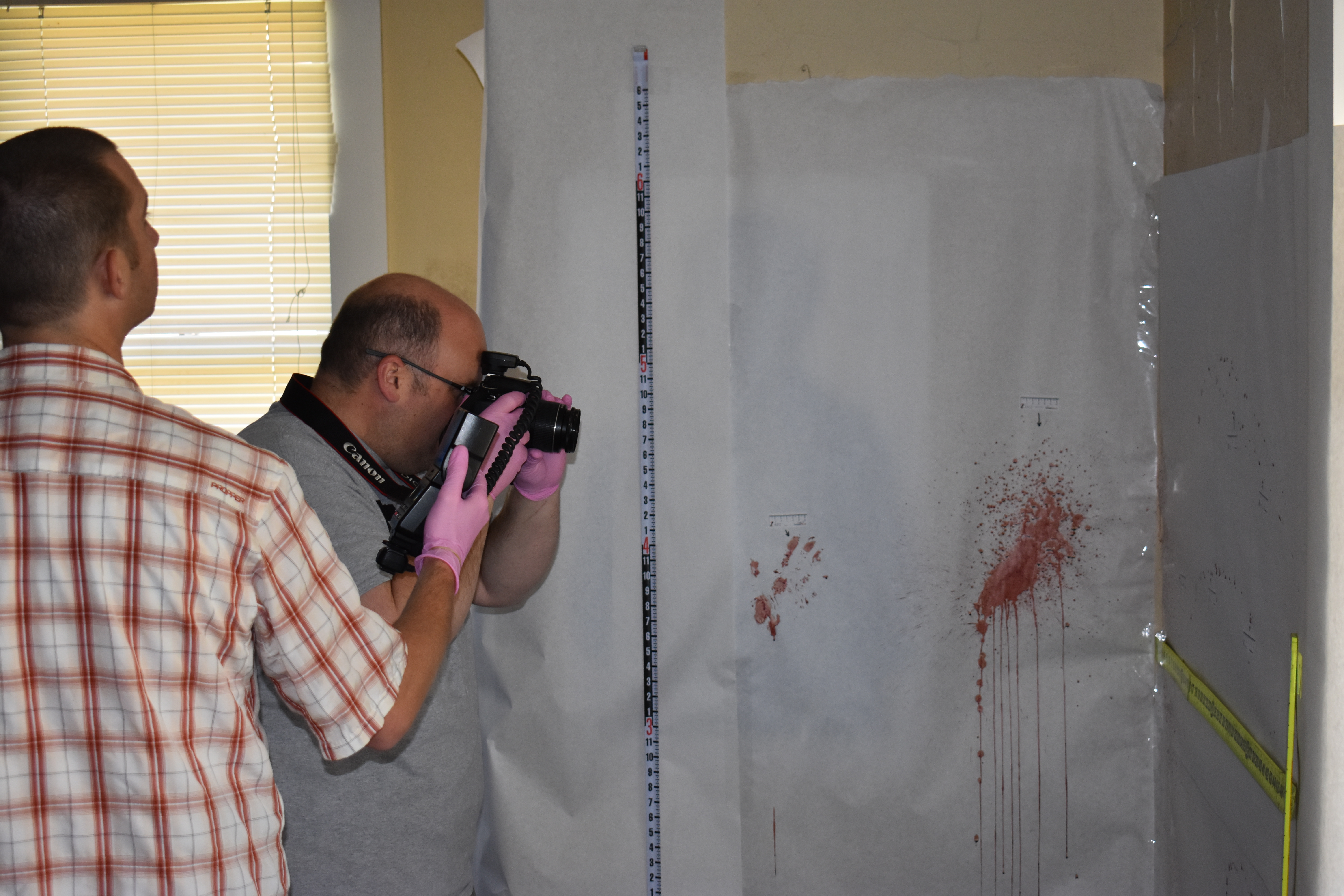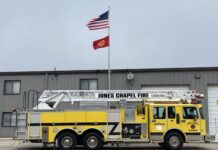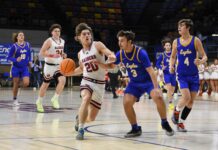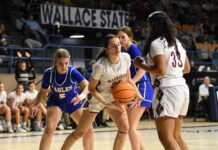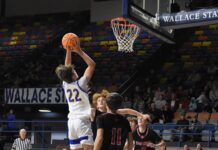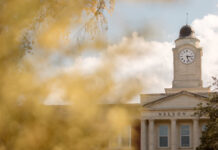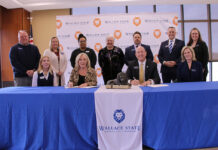CPD officers practice photographing blood stains. (W.C. Mann for The Tribune)
CULLMAN – The classroom and training house at the Cullman Police Department (CPD) have been a bloody mess this week, and with good reason. Investigators from multiple law enforcement agencies came there to take part in a 40-hour class from Monday through Friday, learning how to read blood stains like a fortune teller’s tea leaves. Students studied and practiced analyzing the patterns of blood spatter, gathering and preserving blood evidence, photographing and sketching blood stains at a crime scene, and even presenting blood evidence in a mock court setting.
The class included officers from CPD, the Cullman County Sheriff’s Office, Jasper Police Department, Hoover Police Department, Huntsville Police Department, Calera Police Department, Alabaster Police Department, a forensic investigator from Birmingham, and even an officer from the Elkhart, Indiana Sheriff’s Office.
Jan Johnson, a forensic specialist with training company Forensic Pieces, talked about what the students were learning:
“I’ve set up mock scenes for the students, reproducing patterns that we’ve discussed in the class. So, their job is to go in and document: photograph, sketch, do measurements, sample the blood, and then identify the patterns. And again, the patterns within the scene can give you volumes of information regarding the scene reconstruction.
“Without this training, a lot of times people don’t understand the patterns. They can’t interpret it, and you can come up with a solution to the crime by looking at the blood patterns. The blood will give you volumes of information for crime scene reconstruction.”
According to Johnson, blood patterns on victims, walls, floors, ceilings, furniture and on suspects’ clothing are keys to establishing the truth in many violent crime cases.
One out-of-town investigator, who could not be identified due to his department’s policy, told The Tribune, “This is a great class. It helps us, on a scene, to be able to tell–where I see the value in it–is being able to tell perhaps what happened. When we’re interviewing someone that may be a suspect in a crime, we can see whether their statements are consistent with the scene–what we see at the scene–or whether they’re not, and actually hold them accountable to it.
“Also, when it comes to court now, it takes more training to do this, but the hope is that, over time, that you get to a point where you can actually reconstruct what happened by looking at the blood.”
According to CPD Capt. of Investigation Becky Boyd, upcoming forensic classes this year include crime scene photography and sketching.
Said Boyd, “I’m grateful to have this opportunity to have this kind of training here in the department. The investigators that are in this class are doing a really good job, and I’m proud of them, obviously. But, unfortunately, it’s the times we live in, where this type of skill set is necessary, you know, and it’s part of our job. So we’re really glad to have this opportunity to get this training, and continue moving forward with it.
“Our commitment is always to do the best we can on any crime scene. You know, any time you’re working that type of scene, there’s obviously some type of tragedy involved. But we want to come in, and sometimes what we do may seem like we’re insensitive. But really it’s the most sensitive thing we can do, to work that scene to the very best of our ability–to be the truth finders, the fact finders, to be able to tell, because that victim has got a loved one, and we want to be able to be an advocate for that victim.”
Copyright 2018 Humble Roots, LLC. All Rights Reserved.

